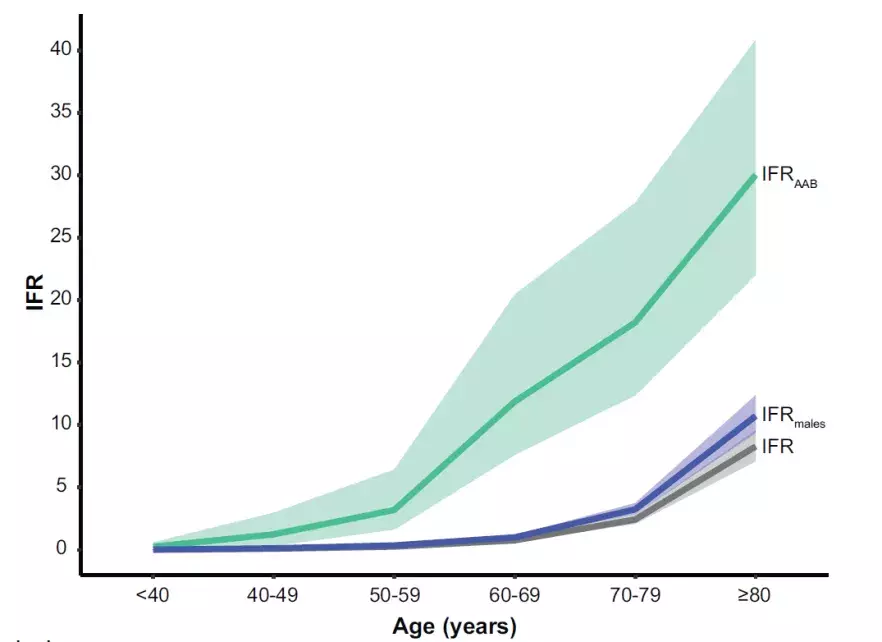Published on 19.05.2022
In 2020, the team of Jean-Laurent Casanova and Laurent Abel, co-directors of the Human Genetics of Infectious Diseases Laboratory at Institut Imagine, published a major finding on the genetic and immunological causes of severe forms of Covid-19 [1][2]. In 2021, the team refining its analysis method to show that about a quarter of severe forms can be explained by genetic defects and immunological abnormalities [3][4]. In particular, the researchers found an abnormal amount of type 1 anti-interferon (IFN1) autoantibodies in patients who developed a severe form of the disease.
In the immune system's arsenal, type 1 interferons act like the first wave of soldiers: they constitute the first immunological barrier against viruses. By blocking their action, autoantibodies sabotage the immune system, which is no longer able to prevent the virus from spreading and proliferating in the body. Hence the development of severe pulmonary forms.
Mortality increases with age
In a new publication in The Proceedings of the National Academy of Sciences (PNAS), researchers wanted to know more about these severe forms [5]. They therefore studied mortality in patients with abnormally high levels of autoantibodies. In practice, they compared the data of 1261 non-vaccinated patients who died during the first two waves of the pandemic with those of 34,159 people from the general population, by age and sex. "We then estimated the mortality rate as a function of age in autoantibody carriers. Result: this rate increases strongly with age (see curve below). We measured that the mortality is less than 1% in people under 40 years of age compared with more than 27% in people over 80 years of age," explains Aurélie Cobat, the last author of the publication, researcher and theme leader in the laboratory. Age therefore has a major influence on the vital prognosis of patients with autoantibodies.
Greater relative risk in those under 70
These figures speak for themselves but, without critical hindsight, they can be misleading. "When you see 1% of deaths in the under-40s, you get the impression that it's not much. In reality, you have to compare it with the mortality rate in the general population for the same age group, which is more like 0.01%, i.e. 100 times lower! That is 100 times lower," warns Jérémy Manry, first author and researcher in the laboratory. In other words, even if they are young and healthy, people with an abnormally high quantity of anti IFN 1 autoantibodies have a 100 times greater risk of dying from Covid-19.
Strangely, this relative risk is 20 times greater in the under-70 age group than in the over-70 age group. "In summary, in a population with IFN1 autoantibodies, the risk increases with age, especially after 60 years. But if we compare this particular population with the general population, then the difference in mortality is much more marked in the under-70 years old," concludes Aurélie Cobat. All these results reinforce and confirm the interest of the public health strategy of testing for the presence of these autoantibodies in the general population.
((Références))
[1] Q. Zhang et al., Science, 24 septembre 2020
[2] P. Bastard et al. Science, 24 septembre 2020
[3] T. Asano et al, Science Immunology, 2021.

